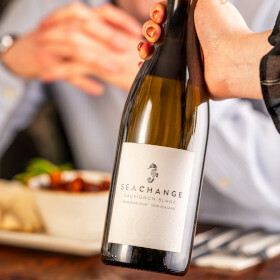World Sake Day: The Beginner's Guide to Sake
Posted by Tamsin on 30th Sep 2024
October 1st marks World Sake Day (Nihonshu no Hi), a celebration dedicated to one of Japan’s oldest and most beloved beverages: sake. This rice-based "wine" has grown in popularity far beyond Japan’s borders, becoming a favourite worldwide. From premium bottles reserved for special occasions to casual sake enjoyed with dinner, this versatile drink offers a rich experience of flavours, aromas, and traditions.
How Sake Is Made: The Art of Fermentation
The process of making sake, known as Seishu, is a meticulous craft that has been refined over centuries. At its heart, sake is made from just four essential ingredients: rice, water, yeast, and koji mould. But while the ingredients may seem simple, the brewing process is anything but.
Polishing the Rice: The first step in sake production involves polishing the rice to remove its outer layer, revealing the starchy core. The degree to which the rice is polished is crucial, as it impacts the flavour and quality of the final product. The more polished the rice, the higher the grade of sake.
Washing, Soaking, and Steaming: Once the rice is polished, it is carefully washed, soaked, and then steamed. Timing is critical here—too much or too little water absorption can affect the fermentation process.
Koji Making: After steaming, the rice is mixed with koji mould (Aspergillus oryzae), which is responsible for breaking down the rice starches into sugars. This crucial step allows fermentation to occur.
Fermentation: The koji-treated rice is combined with water and yeast in large vats, where fermentation begins. This process can take weeks, as the yeast slowly converts sugars into alcohol.
Pressing and Filtering: Once fermentation is complete, the mixture is pressed to separate the liquid from the remaining rice solids. The liquid is then filtered and pasteurized, resulting in sake ready for bottling.
The art of sake brewing is steeped in tradition, and no two sakes are exactly alike. The type of rice used, the water source, the degree of polishing, and even the local climate all contribute to the unique character of each sake.
Different Types of Sake: From Junmai to Daiginjo
Sake comes in a variety of styles and grades, each with its own flavour profile and characteristics. Here are the most common types you'll find:
Junmai: This is a pure rice sake, made with only rice, water, yeast, and koji mould—no additional alcohol is added. Junmai sake typically has a rich, full-bodied flavour with a slightly higher acidity, making it a versatile choice for food pairing.
Honjozo: A small amount of distilled alcohol is added to Honjozo sake during production, which can enhance aroma and lighten the body. It tends to have a smooth, clean taste and is often enjoyed slightly warmed.
Ginjo: Made with rice that has been polished to at least 60%, Ginjo sake is known for its light, fruity, and aromatic profile. The brewing process for Ginjo is labour-intensive, involving lower fermentation temperatures to bring out delicate flavours.
Daiginjo: This is the highest grade of sake, made with rice that has been polished to at least 50%. Daiginjo sake is often regarded as the pinnacle of craftsmanship, with refined, elegant flavours and a fragrant bouquet. It's a perfect choice for special occasions.
Nigori: Unlike other sakes, Nigori is unfiltered, giving it a cloudy appearance and a slightly sweet, creamy texture. It pairs well with spicy food and desserts.
Fruit Sake: In addition to the traditional types of sake, there are fruit-infused varieties that offer a sweeter, more approachable flavour profile. One of the most popular is Umeshu, a plum-infused sake made by steeping ume fruit (Japanese plums) in alcohol and sugar. Umeshu has a rich, sweet, and tart flavour, making it a refreshing choice for those who enjoy fruit-forward drinks. It can be served chilled, over ice, or even mixed into cocktails. Fruit-infused sake, like Umeshu, is perfect for sipping on its own or pairing with desserts, and can be a fun entry point for those new to sake.
At Click N Drink, you’ll find a curated selection of sake that spans all these categories, from the robust Junmai to the luxurious Daiginjo. If you’re new to sake or want to explore different varieties, the platform makes it easy to find something that suits your taste and budget.
How to Serve and Enjoy Sake
Sake can be served in several ways, and how you serve it will depend on the type of sake and the occasion.
Temperature Matters: Sake can be enjoyed cold, warm, or at room temperature, depending on its type. Higher-grade sakes like Ginjo and Daiginjo are best served chilled, as this allows their delicate flavours and aromas to shine. Junmai and Honjozo sakes, on the other hand, can be served warm, which enhances their richness.
Traditional Sake Cups: Sake is typically served in small cups known as Ochoko or Sakazuki, or in wooden boxes called Masu. The cups are designed to highlight the aroma and flavour of the sake with each sip. When served chilled, sake may also be poured into wine glasses to emphasize its aroma.
Pairing Sake with Food: Sake pairs beautifully with a wide range of dishes. Junmai sake's robust flavour complements savoury and umami-rich dishes like grilled meats or tempura. Ginjo and Daiginjo, with their lighter profiles, are ideal with sushi, sashimi, and lighter seafood. Nigori, with its sweet notes, is a fun match for spicy dishes or desserts like mochi.
Raise a glass this October 1st and say “Kanpai!” in celebration of World Sake Day. Click to shop our full range









